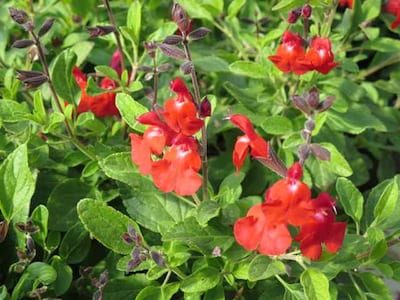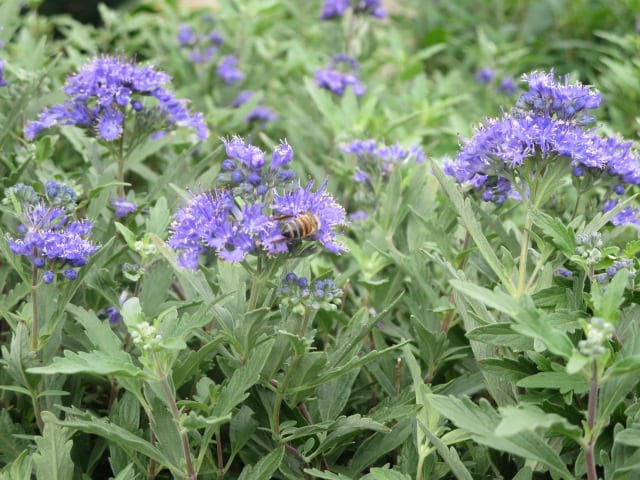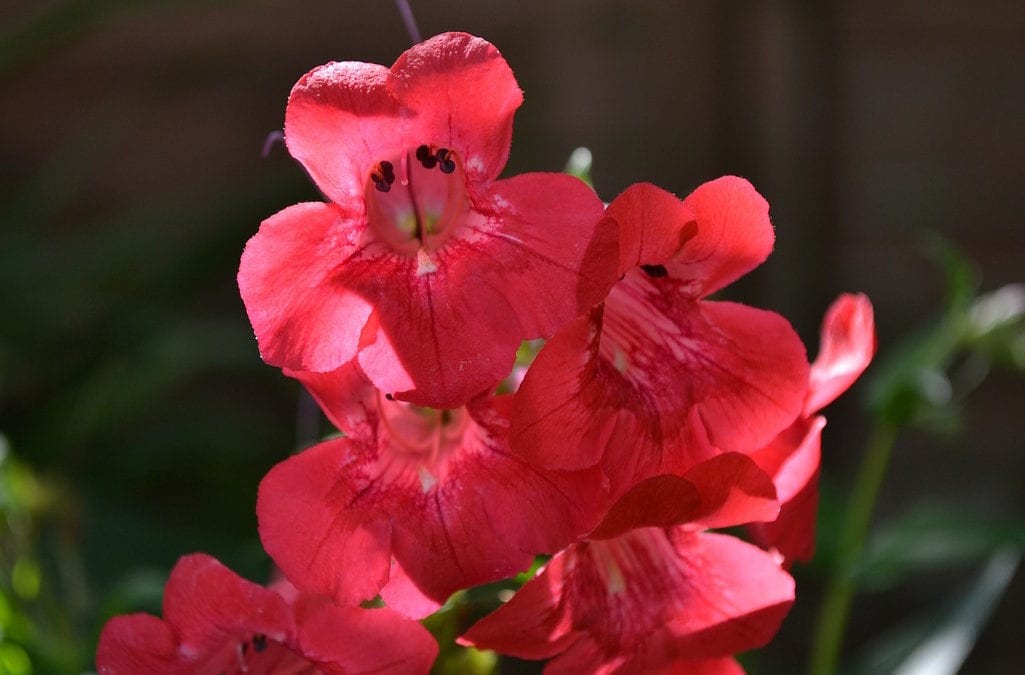We are pretty lucky to be living in San Antonio where we can plant perennials in both fall and spring. Perennials planted in fall have a longer time to get their roots established before the heat of the summer comes blazing in. However, perennials planted in spring can still be successful; they just might need a little extra TLC through the summer.


Many perennials, like this lantana, offer nectar to our pollinators.


Perennials like this salvia repeat their blooms spring through fall; especially if given a little shear back throughout the seasons.
Planting Tips For Perennials:
- Plan and prep your perennial beds (this includes site selection, soil amending, etc.). If you haven’t done this already, see the previous link for our advice before you get planting.
- Read your plant labels for spacing recommendations, many of these transplants will most likely get much larger at maturity, so make sure you are offering them room to grow.
- Water your garden beds thoroughly 24-48 hours BEFORE planting your perennial transplants. Water the transplants in the pots before planting as well.
- Place your transplants (still in containers) where you imagined them in your garden. This way, you can move the pots around as much as you want without disturbing the roots while you decide exactly where you want them. When you are happy with your arrangement, time to dig the holes.
- Carefully remove your transplants and set them in the soil with the top of the rootball even with the soil, or just slightly above it. (Planting the rootball too deeply can be detrimental to most plants.)
- Firm the soil around the plant in the ground, but do not pack and push it too tightly.
- Water your new transplants thoroughly once planted. You can add some soluble fertilizer or root stimulator to give your newly planted transplants a boost.
- Finish up with a layer of mulch 2-3” deep to conserve moisture, regulate soil temperature, and keep weeds at bay.


Perennials are the gift that keep on giving. Dark Knight Bluebeard offers blooms spring through fall each year.


You can choose tight, mounding perennials like this skullcap. No pruning required!
Care For Your New Perennials
- Consistent watering will be key to the survival of your perennials until they are well-established. Water thoroughly to encourage deep, strong roots. Soaker hoses and drip irrigation are ideal for garden beds. It
- Fertilize your established perennials with a slow-release, multi-purpose fertilizer. (Rainbow Gardens 19-5-9 works great for our region, and feeds lawns, perennial beds and even veggie gardens.) An application of this fertilizer, or one with a 3:1:2 ratio, every 6- 8 weeks during the growing season is usually sufficient. To apply, pull back any mulch you have applied, and scratch the fertilizer into the soil slightly. Always water the soil well after applying fertilizer.
- Keep weeds out of the garden beds; they compete with perennials for water and nutrients. Pull weeds or apply an herbicide safe to use in garden beds (read labels carefully as many herbicides can damage your perennials too).
- Keep an eye out for pest issues. Early detection is key in your success with pest control. If you’ve chosen tough, hardy perennials for our area, your pest issues should be minimal to some extent, but they can still show up so be observant, and opt for the least toxic formulation that can do the job.
Don’t forget to take advantage of the SAWS WaterSaver Landscape Coupon program to help purchase perennials that are best suited for our San Antonio climate. This amazing city program is offered both spring and fall; but it does have an expiration date, so apply soon!
~The Happy Gardener
~The Happy Gardener


when will I beable to to purchase dwarf lantanas
Now! Our perennials are starting to roll in to both locations and we have seen dwarf lantana come through. Call ahead to double check inventory as it changes daily.
Do you have donkey ears?
Haven’t seen Donkey ears come through here yet, but they could be on there way anytime. I’d check back in a couple weeks. Might be best to call whichever location you plan to visit to make sure of inventory.
Do you carry the red verbina?
Hi Nadine,
Yes we do usually carry red verbena. I would just double check with whichever location you plan to visit, to make sure we still have some in stock on the day you plan to visit. Our inventory is flying out the door, but we keep getting new plants in too!
Do you have any Four Nerve Daisy?
I am searching for Datura plants. I just moved and was not able to bring my Datura plants
Hi Tanya,
Our Bandera location currently has about 20 datura in one gallon containers, and our Thousand Oaks location has a good supply right now. Inventory can change daily and weekly.
Do you have astilbe?
Hi Ron, I just wanted to give you an update….we finally got some astilbe in stock. As of 5/6/23 we had some in one gallon containers at our Bandera location.
Do you have Tacoma Esperanza? Do you ship places in Texas?
Hi Donna,
Yes, both of our locations have a good selection of Tecoma stans, Esperanza. We do not ship plants at this time.